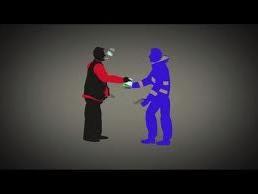- Classification: Drug War |
- Category: Drug War Videos
What You Should Know About Drug Prohibition

Video:
Click to watchIn its history, America has experienced two major periods of drug prohibition. This first was the Federal alcohol prohibition from 1920-1933. The second is the current war on drugs, which began in 1971.
According to Prof. Angela Dills, during these periods of prohibition in America, both homicide rates and police enforcement costs increased. This makes sense, as prohibitions never actually eliminate use. Rather, prohibitions convert peaceful and legal markets into black markets. In black markets, when disputes arise over sales territory, product quality, or money, the government legal system is not available. This forces drug dealers to resolve disputes on their own, which often leads to violence.
The violence of black markets, along with the enforcement of drug policy, attracts the attention of law enforcement. Law enforcement is costly, and the time spent enforcing drug laws could have been spent preventing other crimes like murder, theft, and rape. Drug prohibition not only generates more violence and increases the cost of law enforcement; it also distracts law enforcement and puts citizens at greater risk of crime.
Footnotes
| Date Published | 03/09/2012 |
|---|---|
| Posting Date | 01/07/2013 |








